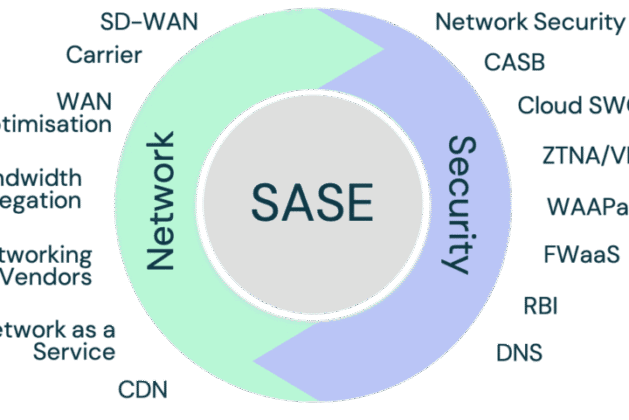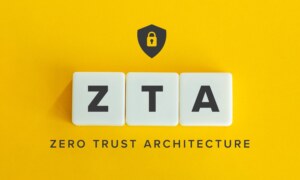If you’ve been anywhere near enterprise IT conversations recently, chances are you’ve heard the term SASE (Secure Access Service Edge). Is it a cybersecurity breakthrough or just another buzzword? As remote work reshapes everything and cloud adoption becomes the norm, we take a closer look at what Secure Access Service Edge really is—and why it might be more than just hype.
Table of Contents
Introduction
Let’s face it—our old approach to network security just doesn’t cut it anymore. Remember the days when everything was safely tucked behind a corporate firewall? Those days are gone. Now, employees work from everywhere, apps live in the cloud, and the data perimeter is basically a dotted line.
That’s where SASE (pronounced “sassy”) comes in. It promises a unified, cloud-native approach to networking and security. But is it all talk, or does it actually deliver?
Let’s unpack the promise, the reality, and what it means for you.
What Is SASE—In Plain English?
SASE, short for Secure Access Service Edge, is a concept introduced by Gartner that merges two crucial IT functions:
- Networking (think: connecting people to resources)
- Security (think: keeping those connections safe)
But instead of using on-prem hardware or patchwork solutions, SASE delivers all of this from the cloud, close to where users actually are.
In short, it combines services like:
- SD-WAN (smart traffic routing)
- Zero Trust Network Access (ZTNA)
- Firewall-as-a-Service (FWaaS)
- Secure Web Gateway (SWG)
- Cloud Access Security Broker (CASB)
It’s not a single product—it’s an architecture that glues all these tools together and delivers them as a service. Neat, right?
Why SASE Is Suddenly Everywhere
A few big shifts pushed SASE from theory to necessity:
- Remote and hybrid work blew up the idea of a single, central office.
- Cloud-first apps made traditional firewalls feel outdated.
- Cyber threats became more frequent, more sophisticated.
- User expectations soared—nobody wants laggy apps or clunky VPNs.
Companies needed a way to simplify their IT stack, secure users wherever they were, and scale without chaos. SASE fits the bill.
Breaking Down the SASE Stack
Here’s a human-friendly look at what makes up a SASE platform:
SD-WAN
Think of it as GPS for your internet traffic—choosing the fastest, safest routes to connect users to apps.
Zero Trust Network Access (ZTNA)
No assumptions here. Every login, every request is verified. It’s like checking ID at every door—even for employees.
Secure Web Gateway (SWG)
Filters web traffic to block threats like phishing, malware, and dodgy sites.
Cloud Access Security Broker (CASB)
Keeps tabs on all those cloud apps your employees are using (even the ones they didn’t tell IT about).
Firewall-as-a-Service (FWaaS)
A next-gen firewall delivered through the cloud. It scales better and protects users wherever they are.
What SASE (Secure Access Service Edge) Gets Right
Here’s where SASE earns its stripes:
✅ It simplifies your tech stack
No more juggling ten different vendors. One unified platform = fewer headaches.
✅ Security is consistent
Whether someone’s working from an office or an airport, they’re protected by the same policies.
✅ It plays nice with cloud and remote work
SASE is built for the way we work now—not the way we used to.
✅ Performance is usually better
Routing traffic through the closest edge point means lower latency and a smoother user experience.
But It’s Not a Silver Bullet
No tech solution is perfect. With SASE, here are the catches:
❌ Vendor lock-in is a real risk
Picking a platform means committing. Choose wisely.
❌ Not all providers offer the full package
Some do networking well but fall short on security—or vice versa.
❌ It’s not plug-and-play
Migration takes time, planning, and (honestly) a bit of pain.
Is SASE Right for You?
It depends. If your organization:
- Has a remote or hybrid workforce
- Uses a ton of SaaS applications
- Struggles with managing security across multiple offices
- Needs to scale quickly without adding complexity
…then yes, SASE could make your life easier.
But if you’re a small org with a single office and minimal cloud exposure? It might be overkill—for now.
Final Thoughts: More Than Just Hype
In the world of tech, there’s always a new acronym. But SASE feels different—because it’s not just a shiny new product, it’s a response to how work has actually changed.
It’s not a magic wand, and it’s not for everyone. But for organizations wrestling with complexity, risk, and the realities of modern IT, SASE isn’t just hype—it’s a smart, forward-looking strategy.
Read More: Zero Trust Architecture: The Future of Cybersecurity or Just Another Buzzword?




